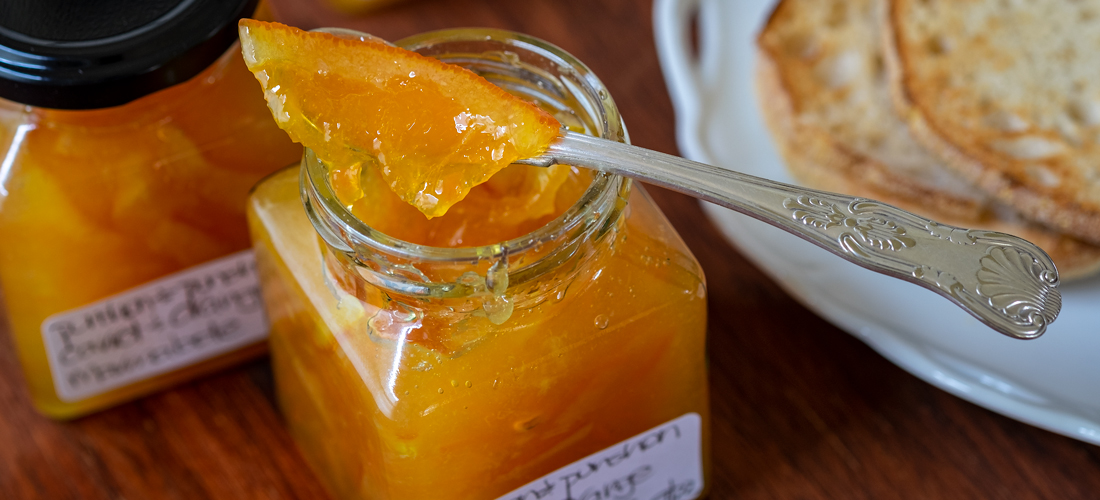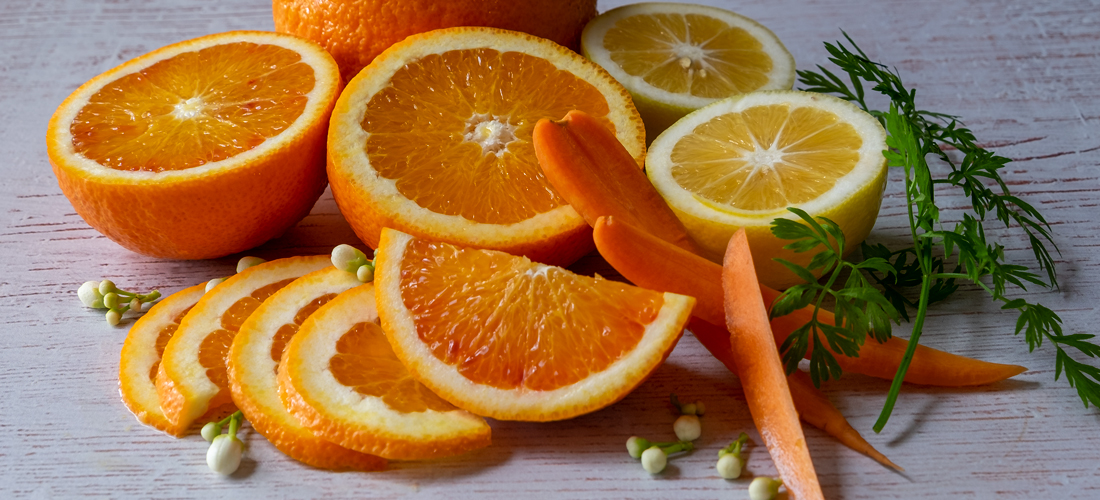Carrot and Orange Marmalade
- Jams, Jellies & Marmalades

The sweet woody flavour of carrot marries perfectly with the mango and pineapple hints of sweet orange. The orange peel provides the sweet-tart characteristics of a marmalade, but it’s a softer profile than the more traditional style. It’s the perfect beginner’s marmalade or for those that are looking for an interesting citrus style jam.
Make when the sweet spring carrots are abundant and use last of the winter oranges to make a pot of sunshine that exudes positivity and happiness.
Marmalade has a fascinating culinary history that spans two thousand years. Once an after-dinner sweetmeat for the wealthy, it’s now a breakfast spread that’s consumed all over the world. Spread the love and celebrate the marvellous citrus fusion of marmalade.
- Preparation Time:
- 15 minutes
- Cooking Time:
- 90 minutes
- Quantity:
- 5 x 300 ml jars
PREPARATION
Warm sterilised sealable glass jars and lids
Warm sugar

INGREDIENTS
- 2
- Sweet oranges, medium
- 2
- Lemons, medium
- 180g
- Carrot, coarsely grated
- 1.1 kg
- White suagr
- 500 ml
- Water
METHOD
Wash the skin of the citrus to remove any debris or wax if they have been commercially grown.
Remove the ends and cut in half and then into 2-3 mm slices. Reserve any pips and place into muslin or calico cloth with the ends of the fruit. This will be made into a pectin bag. The Notes section below explains how to make this.
Place the prepared fruit and completed pectin bag into a large preserving pot and simmer gently for approximately 40 minutes with the lid on or until the citrus peel is soft. The Notes section below explains how to test if the peel is cooked.
Wearing clean kitchen gloves, remove the pectin bag and squeeze to extract as much water and pectin from the peel and pip mixture as possible. Discard the contents and wash the bag later so it can be reused again as required.
Peel and grate the carrot and add to the preserving pan. Simmer, uncovered, until the carrot is soft.
Add the warmed sugar and stir continuously until it is dissolved. Bring to the boil quickly and boil rapidly, without the lid, for approximately 10 minutes. Then check to see if it has reached the setting point. If not, allow to boil and keep checking every 2 minutes until it reaches the set point using either the flake or wrinkle test or until it reaches 105 C/220 F.
Remove from the heat and with a stainless-steel or any other fine-edged spoon, skim the top of the marmalade to remove any scum that has accumulated during the cooking process.
Allow to cool slightly for approximately 5 minutes, then stir gently to distribute the peel and carrot evenly. Using a funnel, pour into warm dry sterilised screw cap sealable jars and fill to approximately 2.5cm (1 inch) from the top.
Seal while hot and allow to cool. Wash off any marmalade dribble from the jar and dry. Label, and store in a cool dark place in the kitchen or pantry.
Allow the marmalade to mature for at least 2 weeks before eating.
NOTES
- Use fresh recently picked citrus as the pectin content will be higher. Pectin is concentrated in the seeds, pith, peel, and cores of fruit. Don’t discard them. They are invaluable in jam and marmalade making as it is the ratio between the fruit acids, pectin and sugar that makes them set.
- To make a pectin bag, drape clean sterilised calico or muslin cloth which has been scalded in boiling water, over a bowl. Place the pips, and fruit ends in the cloth. Gather up the ends and close the bag by tying it up with kitchen string. Allow room, between the tie point and fruit mass, so the water can bubble through the bag easily. This helps to extract as much pectin as possible from the contents. It’s now ready to use. Discard the fruit once the bag has been removed from the preserving pan. Wash, dry and keep the cloth for the next batch. My tea towel draw has a range of different sized cloths that are on hand for my jam and marmalade experiments.
- If the fruit contains a lot of pith, only put a small amount in the pectin bag, otherwise the marmalade can take on a bitter taste.
- To wash the fruit, I use a pair of Skrub’a gloves. A wonderful invention, they are made of a slightly course material that magically scrubs fruit and vegetables with the greatest of ease. Easy to wash and dry, they are an indispensable item in my kitchen. Special thanks to my very dear friend Sue, who found them in a cookware shop.
- To test if the peel is cooked, squeeze a piece between the thumb and finger; it should squeeze easily to a mush .
- To warm the sugar, put the recipe quantity in an oven proof container and place in a preheated oven, 120 degrees C, for approximately 10 minutes. The sugar should be warm to touch, not hot. Warmed sugar, dissolves quickly and a rapid boil, until the setting point is reached, helps to preserve the fresh citrus flavour.
- If you don’t have a preserving pan, use a large pot, preferably stainless steel. Ensure there is enough space available in the pot for the mixture to double in size while it is rapidly boiling.
- Any stray pips that managed to end up in the pot will rise and fall while the marmalade is boiling. As the cooking progresses, they will become increasingly darker, making them easier to see. Remove while you can so that they don’t end up in the jar. If you are entering your marmalade into any competitions, judges will mark your submission down if they see them.
- What’s scum and how to remove
- Jams, jellies, and marmalades can produce a scum while they are boiling. Impurities from the fruit and sugar will rise to the surface and a fine frothy foam will move towards the edge of the preserving pan. Some fruits will produce more scum than others.
- This is a natural self-clarification process and makes the task of making a high-quality preserve easier. Removing the scum increases the preserve’s clarity. This is very important if it is being submitted for competition. Remove the scum before bottling. Using a stainless-steel spoon, skim the scum from around the edge of the preserving pan. Be careful to remove just the scum and not the jam. This can be done while the preserve is boiling and/or once it has been taken off the heat. Do not attempt to remove the scum from the centre of a boiling pan, as there is a high risk it will splutter and hot preserve burns.
Happy marmalading
